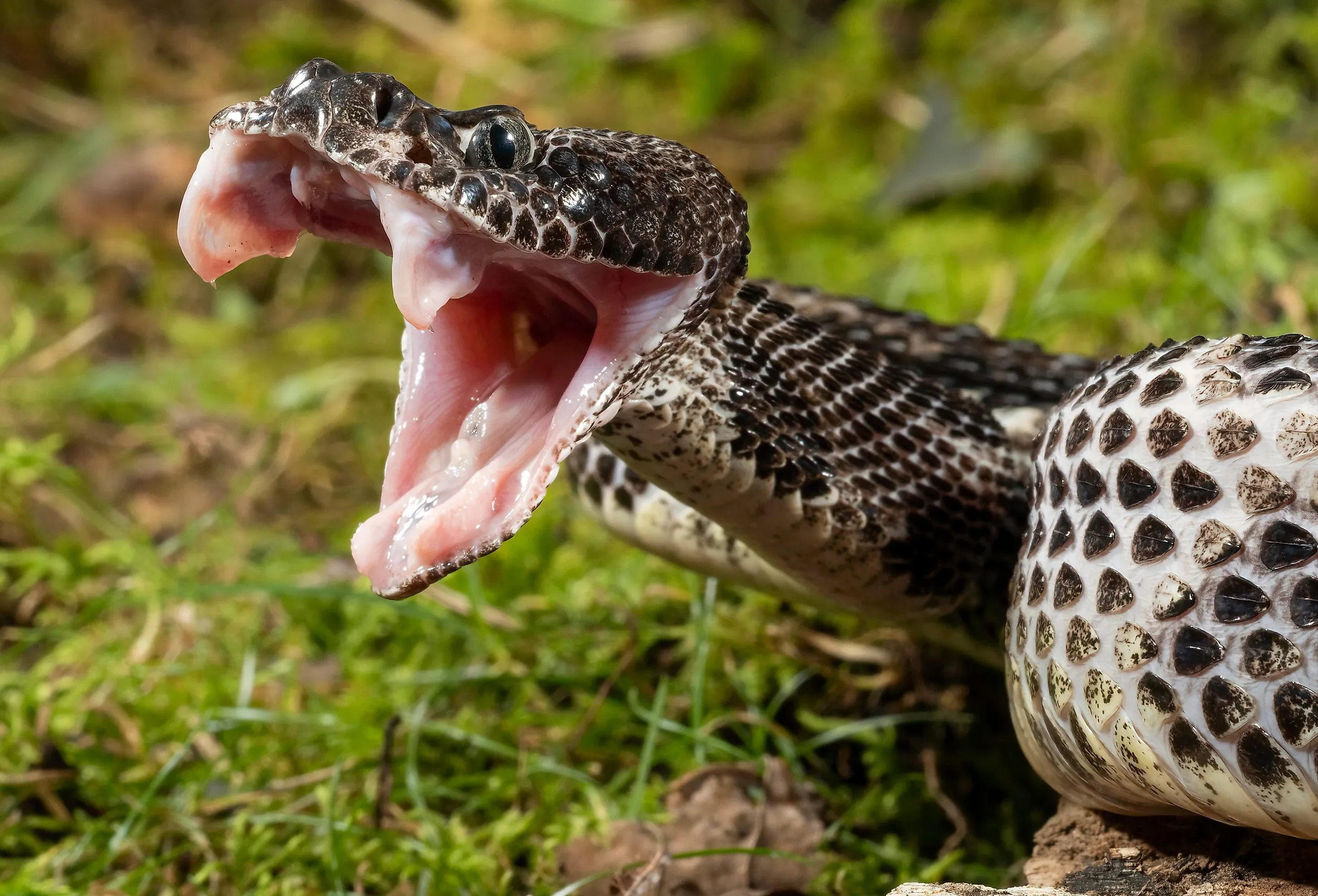
6 Most Rattlesnake Infested Areas in Connecticut
Only a single rattlesnake species inhabits Connecticut, whose mix of rocky terrain, dense forests, and temperate climate provides an ideal habitat for this iconic reptile. It is believed that rattlesnakes were once widespread throughout the state, with the reptile being the name of Rattlesnake Mountain, a 750-foot mountain near the capital, Hartford; the only remaining species in Connecticut is the state-endangered timber rattlesnake (Crotalus horridus).
Today, the timber rattlesnake population is spread out across the state, with the timber rattlesnake limited to about ten towns in the central and western portions of the state. Although their numbers have dwindled due to human activity, loss of habitat, and intentional killing, outdoor enthusiasts should still be cautious when visiting any of Connecticut's six most rattlesnake-infested areas.
Meshomasic State Forest
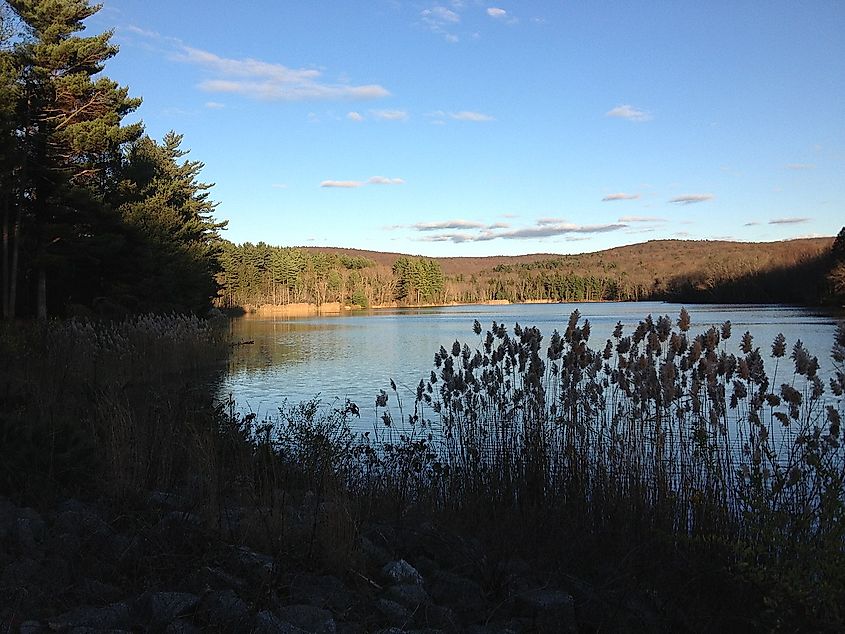
In central Connecticut, spanning the towns of Portland, East Hampton, Marlborough, and Glastonbury, the 9,000-acre Meshomasic State Forest is the first state forest in Connecticut and New England and the second state forest in the United States. Meshomasic’s rocky terrain and dense woods provide the perfect habitat for wildlife, including the endangered timber rattlesnake.
The Meshomasic State Forest is home to the largest population of timber rattlesnakes in the state that seek out rugged areas with steep ledges, rock slides, and a nearby water supply, making the forest an ideal home for the venomous reptiles. Considered an upland species, timber rattlesnakes are rarely found in elevations less than 500 feet above sea level.
Litchfield County
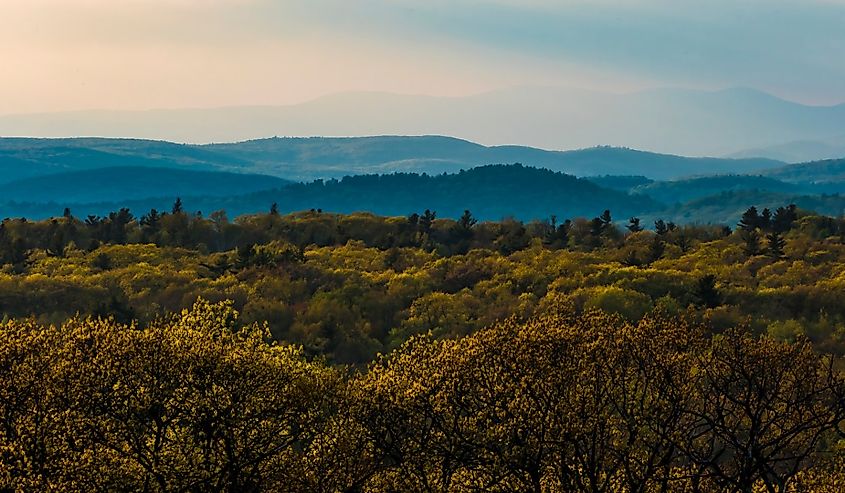
Timber rattlesnakes are present in the Litchfield Hills, in the northwest corner of the state on the Naugatuck River. In Litchfield County in historic Torrington, home to Burr Pond State Park and Paugnut State Forest, in the summer of 2024, a man was bitten on the hand by a timber rattlesnake when he stopped to move the pit viper from the road so it wouldn’t be run over. The man was later flown to Hartford for treatment with antivenom, as doctors at the local hospital weren’t experienced in treating rattlesnake bites. The man experienced a rapid onset of symptoms, including breathing difficulties, swelling, and cardiac arrest. Several dogs have also been bitten by rattlesnakes in the area, but bites to humans are uncommon.
Glastonbury
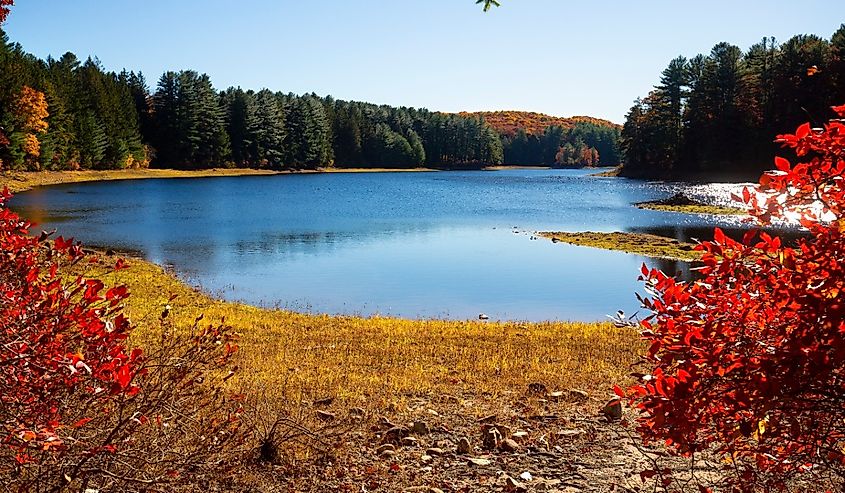
The town of Glastonbury, in Central Connecticut along the Connecticut River, is home to the oldest ferry operating in the United States, which runs between South Glastonbury and Rocky Hill. It is also home to timber rattlesnakes and, in 2023, was the location of several rattlesnake bites to family pets, leading the town to release a warning about their presence in steep and rocky areas with fallen trees, log piles, and rock beds. In 2022, two dogs were bitten by a 5-foot timber rattlesnake while playing in their Glastonbury backyard within minutes of each other. Authorities captured the endangered rattlesnake, examined it, and placed it back inside its den.
East Hampton
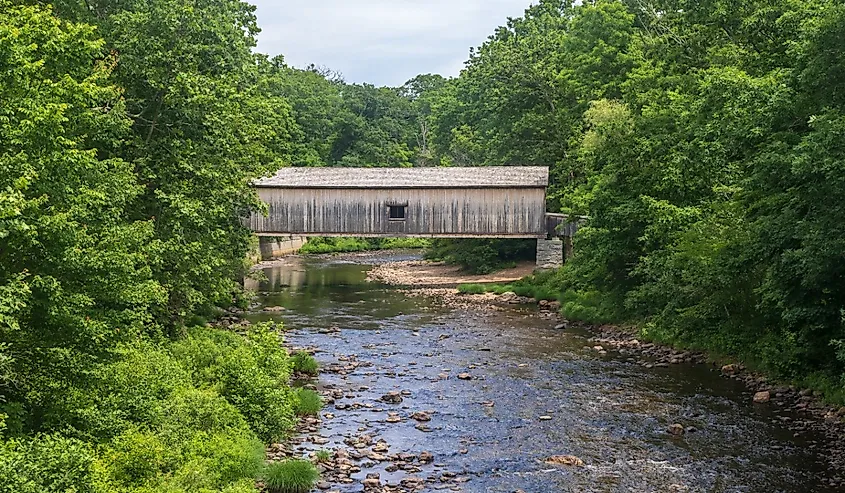
Near the state’s timber rattlesnake hotspot, Meshomasic State Forest, a dog was bitten by a rattler in July 2023 in the town of East Hampton, when the snakes were most active. Luckily, the owner recognized the species as a timber rattlesnake, and the dog was treated with antivenom quickly at a local veterinary clinic. Hikers and outdoor lovers should keep their four-legged friends leashed when adventuring on a trail to avoid encountering a timber rattlesnake that will only strike when threatened.
Mount Algo
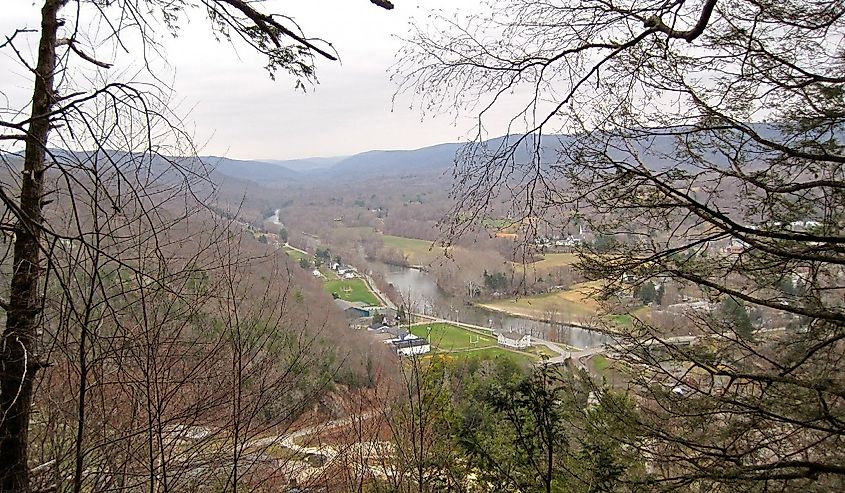
Mount Algo is a notable peak in Kent, Connecticut. It is part of the Appalachian National Scenic Trail, which spans 52 miles in the northwestern corner of the state. This stretch of the trail is known for its lush green forests and peaceful river paths as it skirts the Housatonic River. Over the years, hikers have reported the presence of timber rattlesnakes on the trail. In Connecticut, timber rattlesnakes grow to an average length of 40 inches and are distinguished by black or brown crossbands on a yellow, brown, or gray background.
Cockaponset State Forest
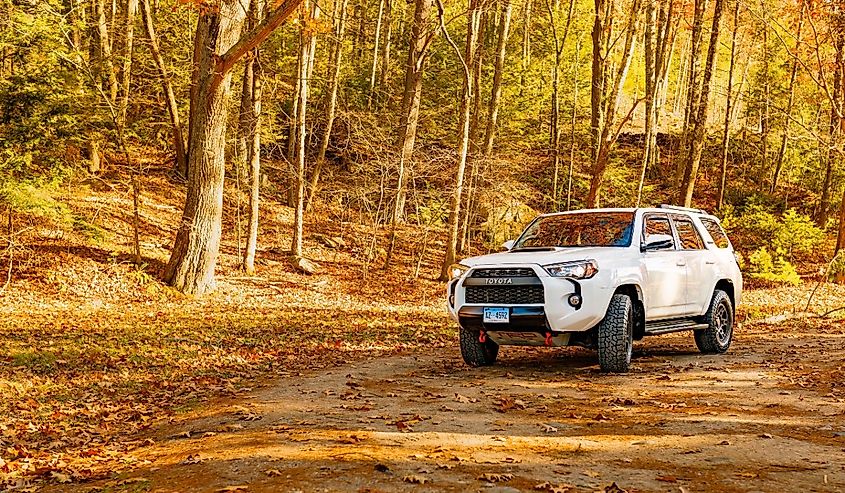
Cockaponset is Connecticut’s second-largest state forest, spanning 17,000 acres across eleven towns. Home to over 100 miles of hiking trails, Lake Pattaconk, and a range of varied terrain, the park is a popular destination for hiking, mountain biking, horseback riding, kayaking, and simply enjoying the great outdoors. It is also a prime habitat for many reptiles, including non-venomous snakes like the eastern milk snake and the black rat snake. Timber rattlesnakes have occasionally been spotted in the more rugged sections of the forest when they are active from mid-April through October.
Connecticut is home to several rattlesnake-infested areas where timber rattlesnakes thrive in diverse habitats. Meshomasic State Forest, with its rugged terrain and water sources, hosts the state’s largest population of timber rattlesnakes. Litchfield County, particularly in Torrington, has timber rattlesnakes, though human bites are rare. Glastonbury, known for its historic ferry, has also seen timber rattlesnake bites in residential areas, leading to warnings for residents. Finally, homeowners with backyards near rattlesnake hotspots should be vigilant during the summer months to prevent injuries to their pets. These encounters with rattlesnakes in the six most rattlesnake-infested areas serve as reminders to stay alert when exploring Connecticut’s natural landscapes.











